لماذا وضعت “موديز” الاقتصاد المصرى قيد المراجعة..؟ (إنجليزي)
Moody's places Egypt's B3 ratings on review for downgrade
Moody’s Investors Service (“Moody’s”) has today placed the Government of Egypt’s B3 longterm foreign-currency and local-currency issuer ratings on review for downgrade. Prior to this rating action, Egypt’s ratings were B3
and the outlook was stable.
Moody’s has also placed on review for downgrade Egypt’s B3 foreign currency senior unsecured ratings and its (P)B3 foreign currency senior unsecured MTN program rating, as well as the (P)B3 senior unsecured MTN program rating of the Egyptian Financial Corporation for Sovereign Taskeek sukuk company, and its B3 senior unsecured rating which are, in Moody’s view, ultimately the obligation of the Government of Egypt.
The review for downgrade reflects the sovereign’s increasing liquidity and debt affordability risks. Slower than anticipated progress with the state-owned asset sale strategy, a key component of the 46-month IMF program that started in December 2022, risks undermining Egypt’s financing plans, weakening the sovereign’s foreign exchange liquidity and eroding confidence in the currency. Adverse feedback effects on inflation and borrowing costs, as well as adverse valuation effects on foreign currency debt caused by the weakening currency, exacerbate debt affordability risks. The review period will focus on the government’s ability to finalize the targeted $2 billion in asset sales necessary to meet the IMF program’s financing targets for fiscal 2023 (ending June) and demonstrate the viability of the program’s external funding strategy that relies significantly on asset sales. The review period will also focus on authorities’ ability to bolster net international reserves as per quantitative IMF program targets over a three-month period and support confidence in the currency.
Egypt’s country ceilings remain unchanged at Ba3 for the local-currency ceiling and B2 for the foreign-currency ceiling. The three notch gap between the local-currency ceiling and the sovereign rating reflects the public sector’s large footprint in the economy that inhibits private sector development and credit allocation, mitigated by a track record of implementation of structural, competitiveness related, reforms. The two-notch gap of the foreign-currency ceiling to the local-currency ceiling reflects the narrow foreign currency liquidity buffer. Potential risks of transfer and convertibility restrictions under scenarios of intensifying stress are mitigated by the agreed shift to a flexible exchange rate regime and the removal of letters of credit requirements that supports a gradual rebalancing of external accounts.
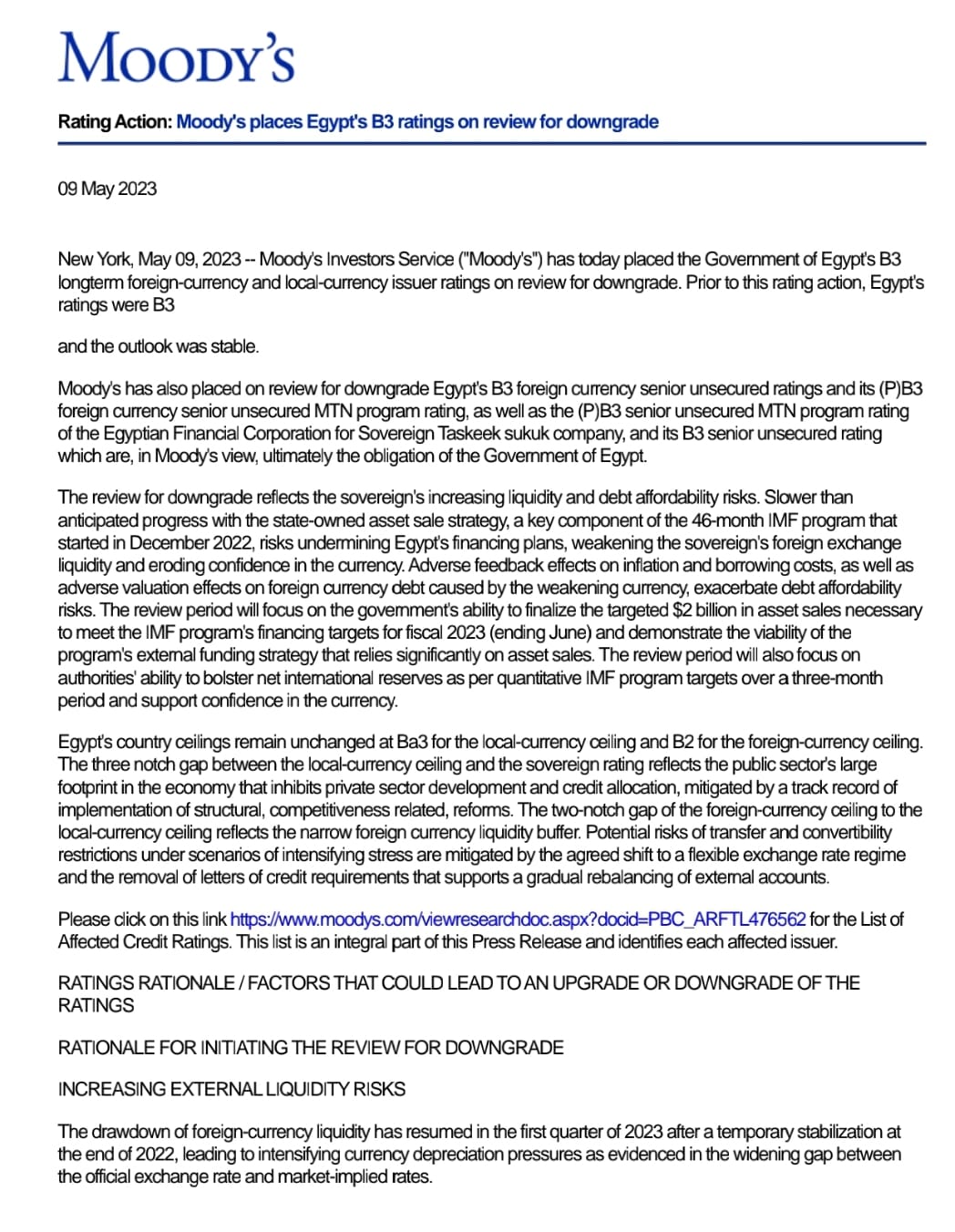
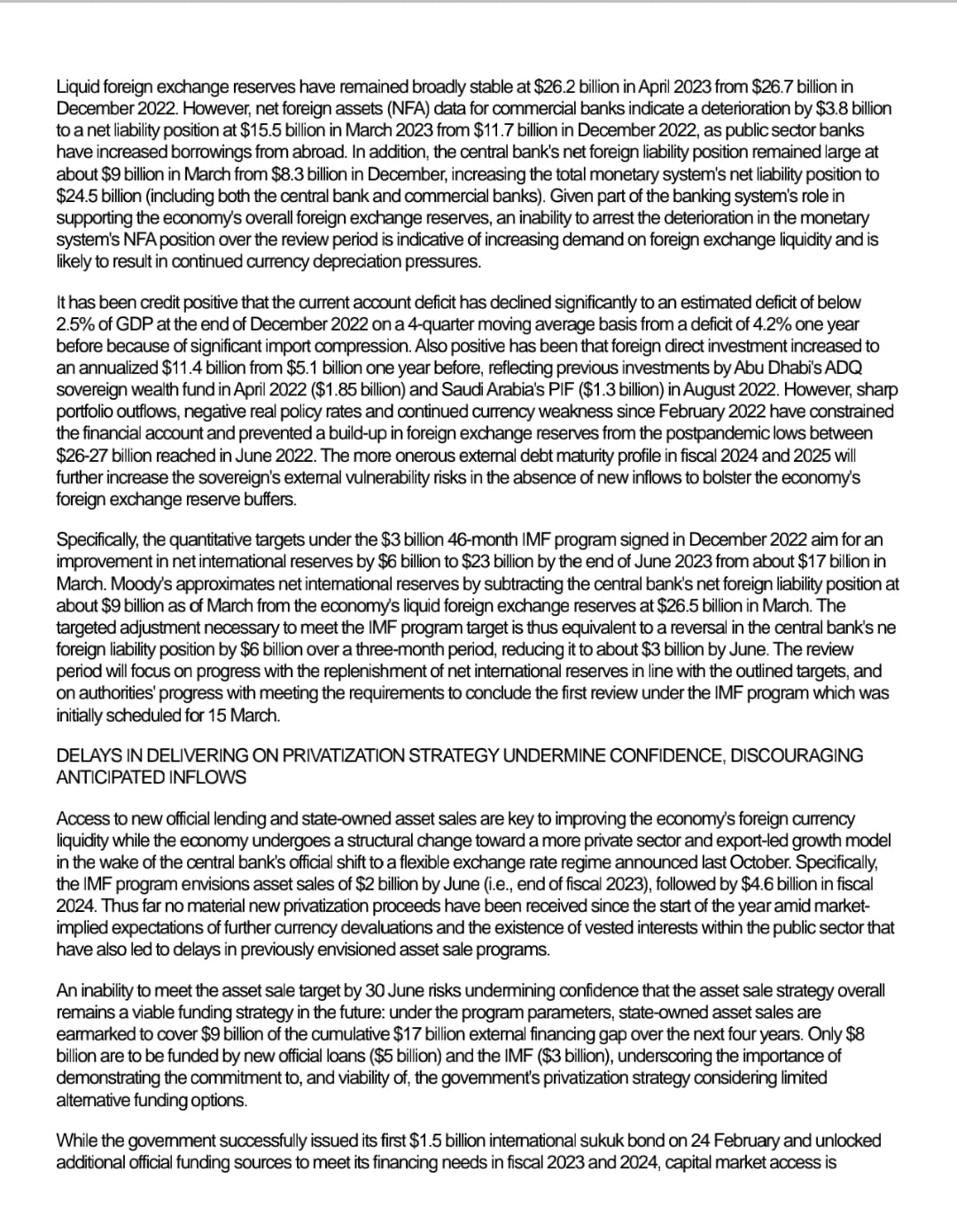
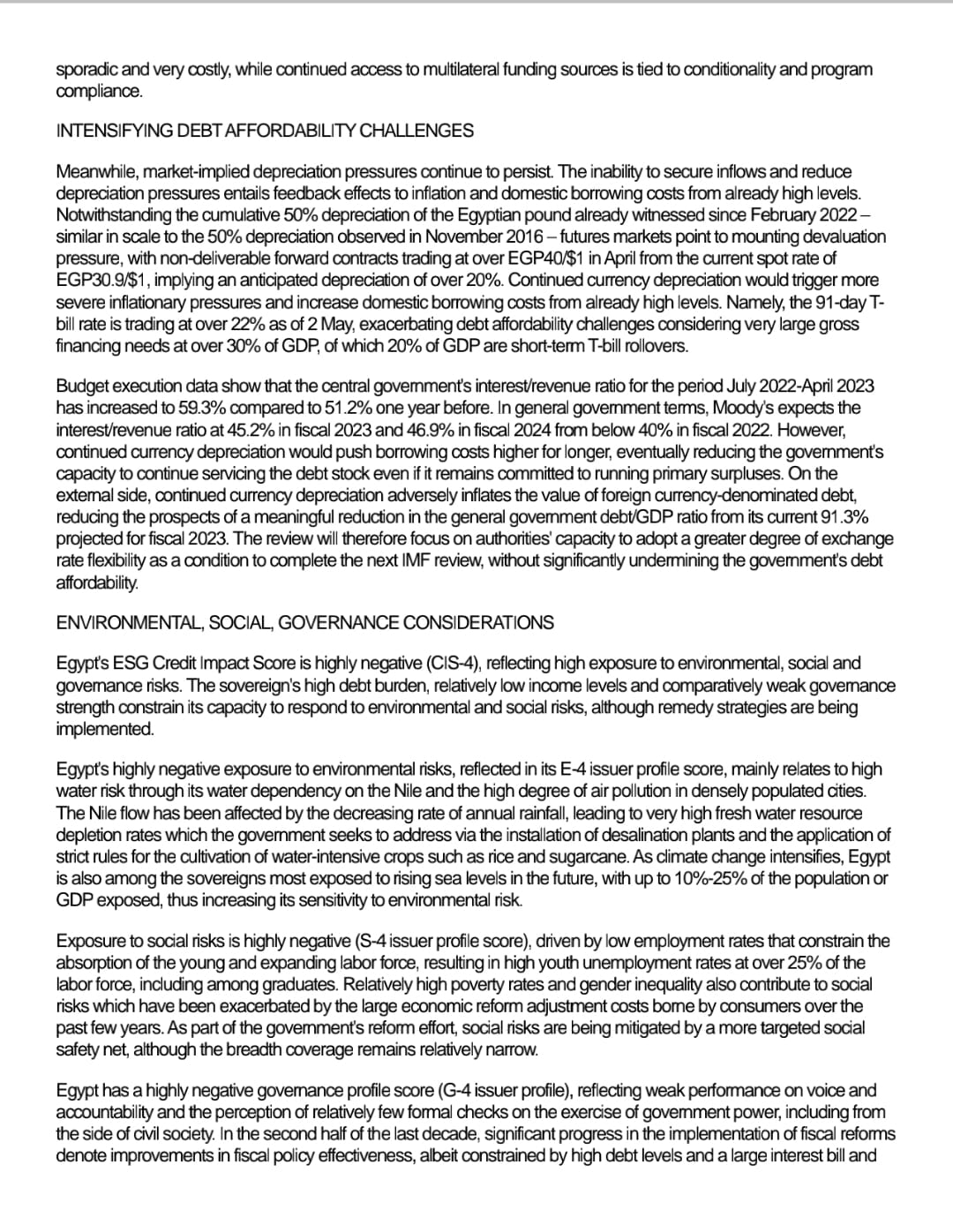
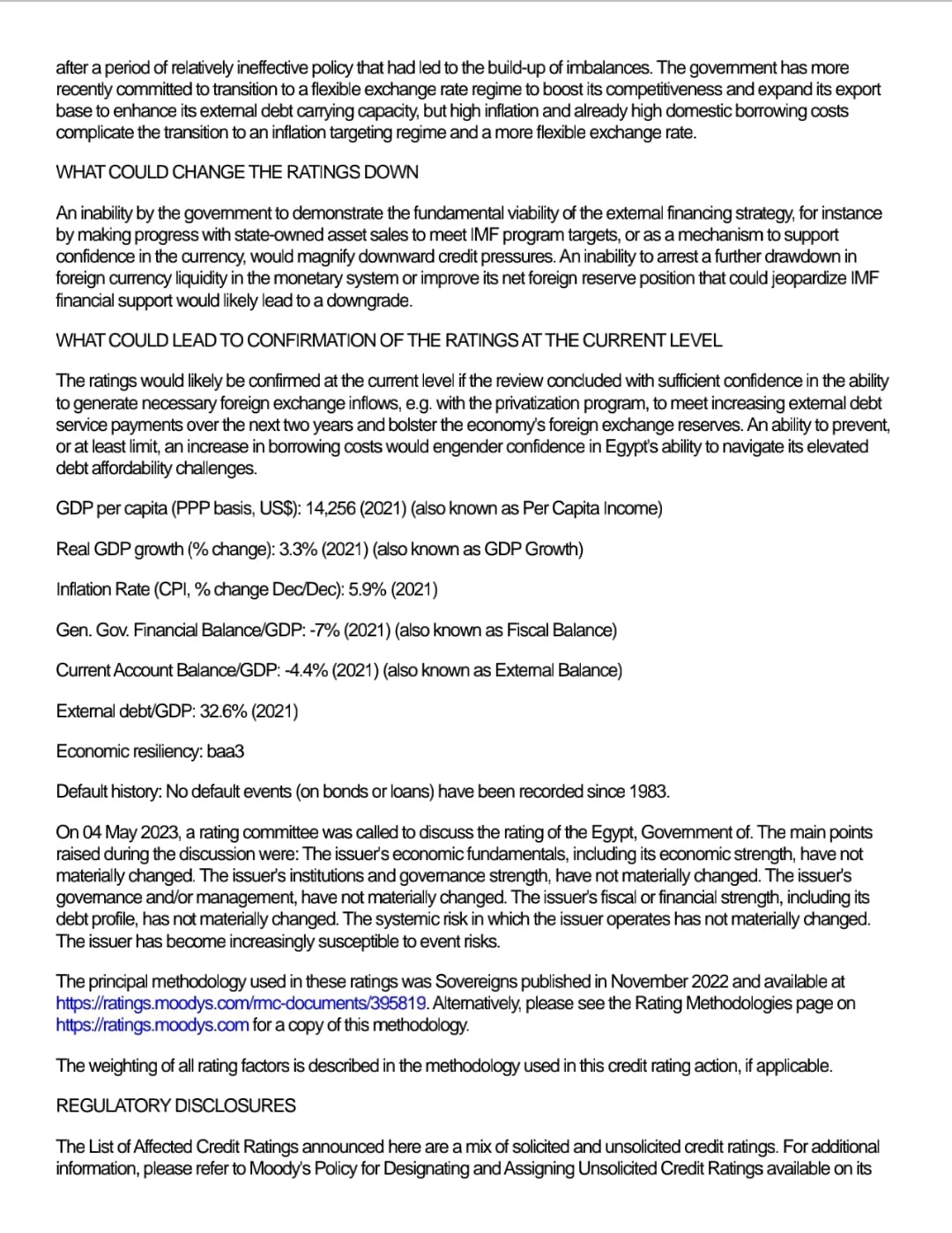
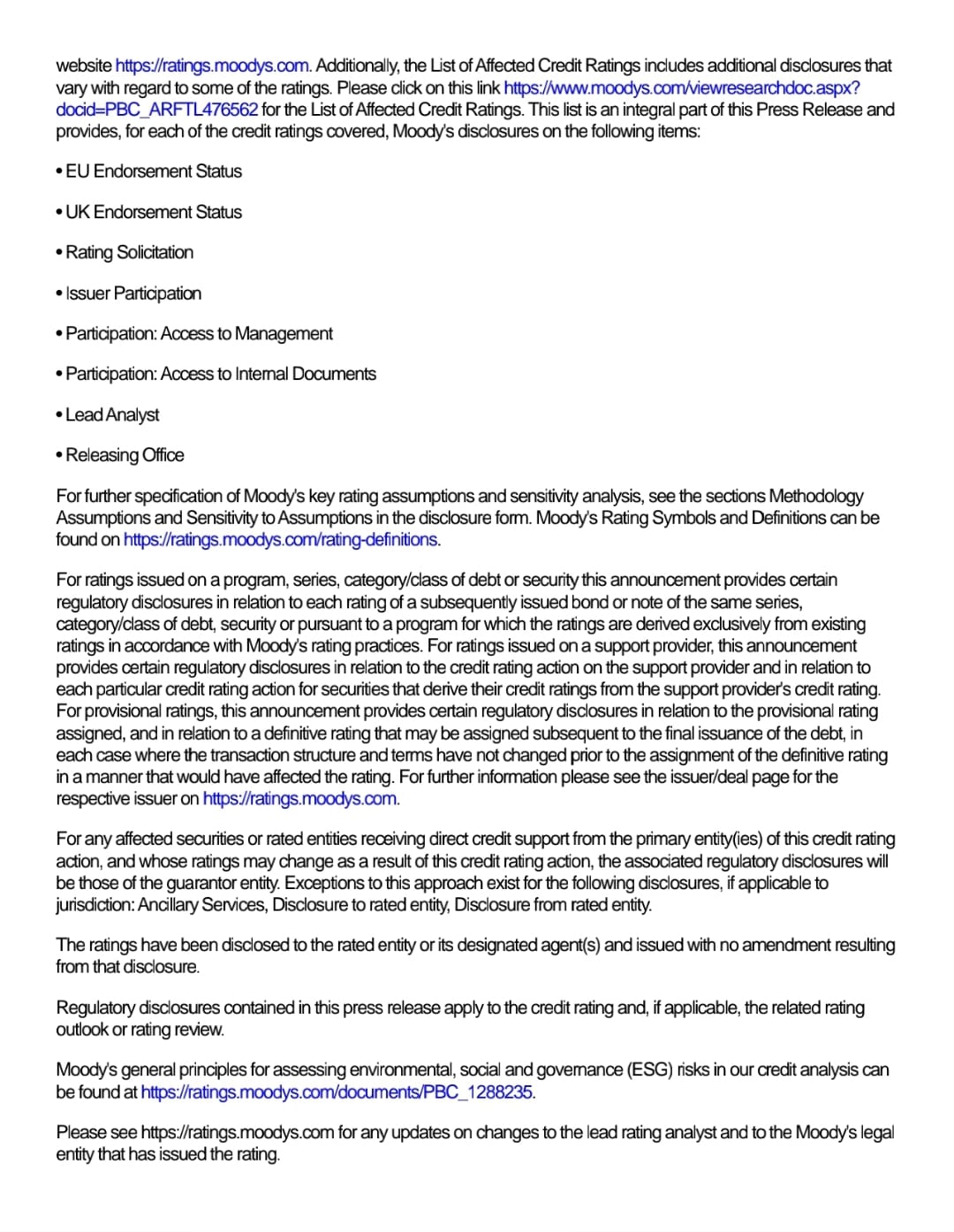
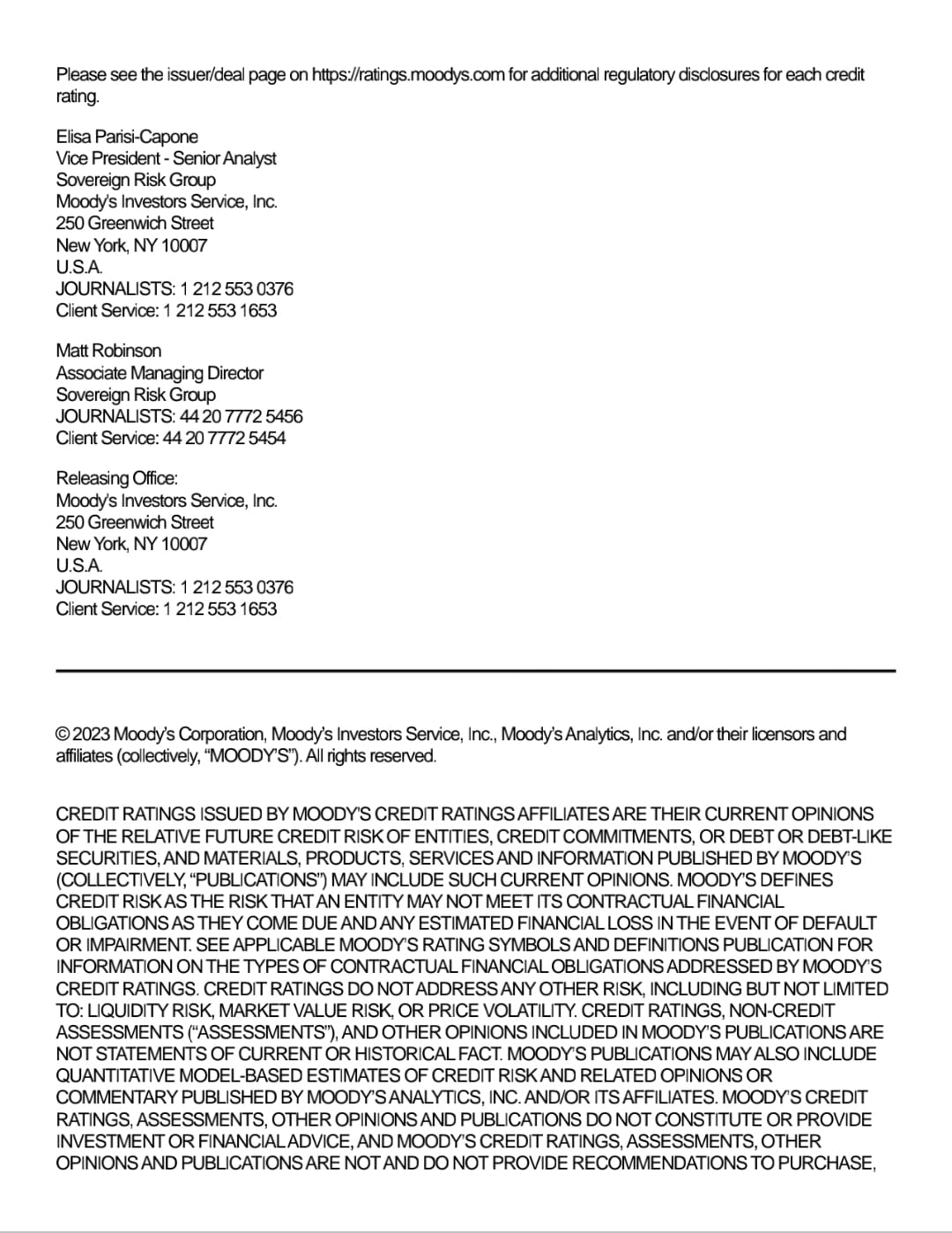
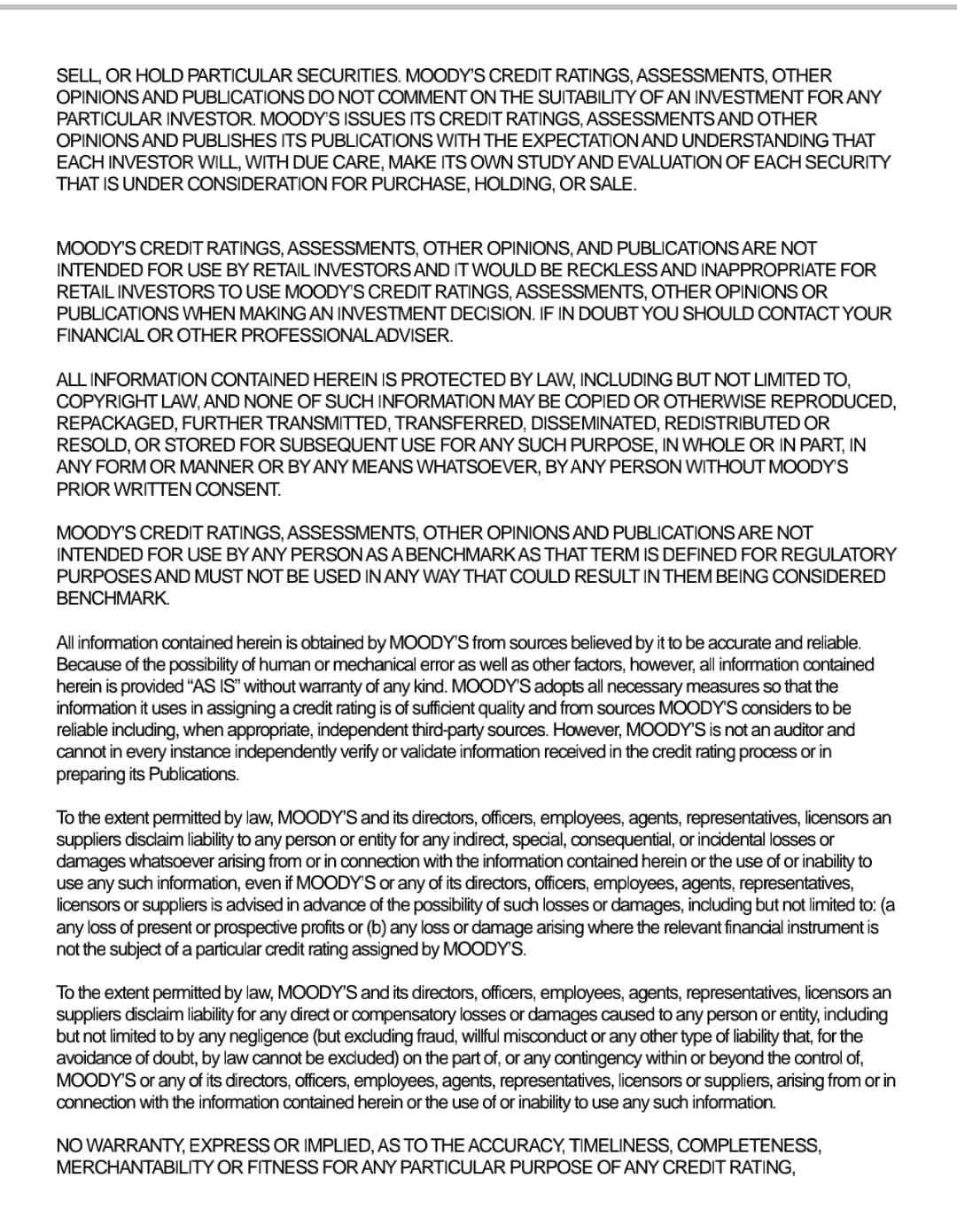
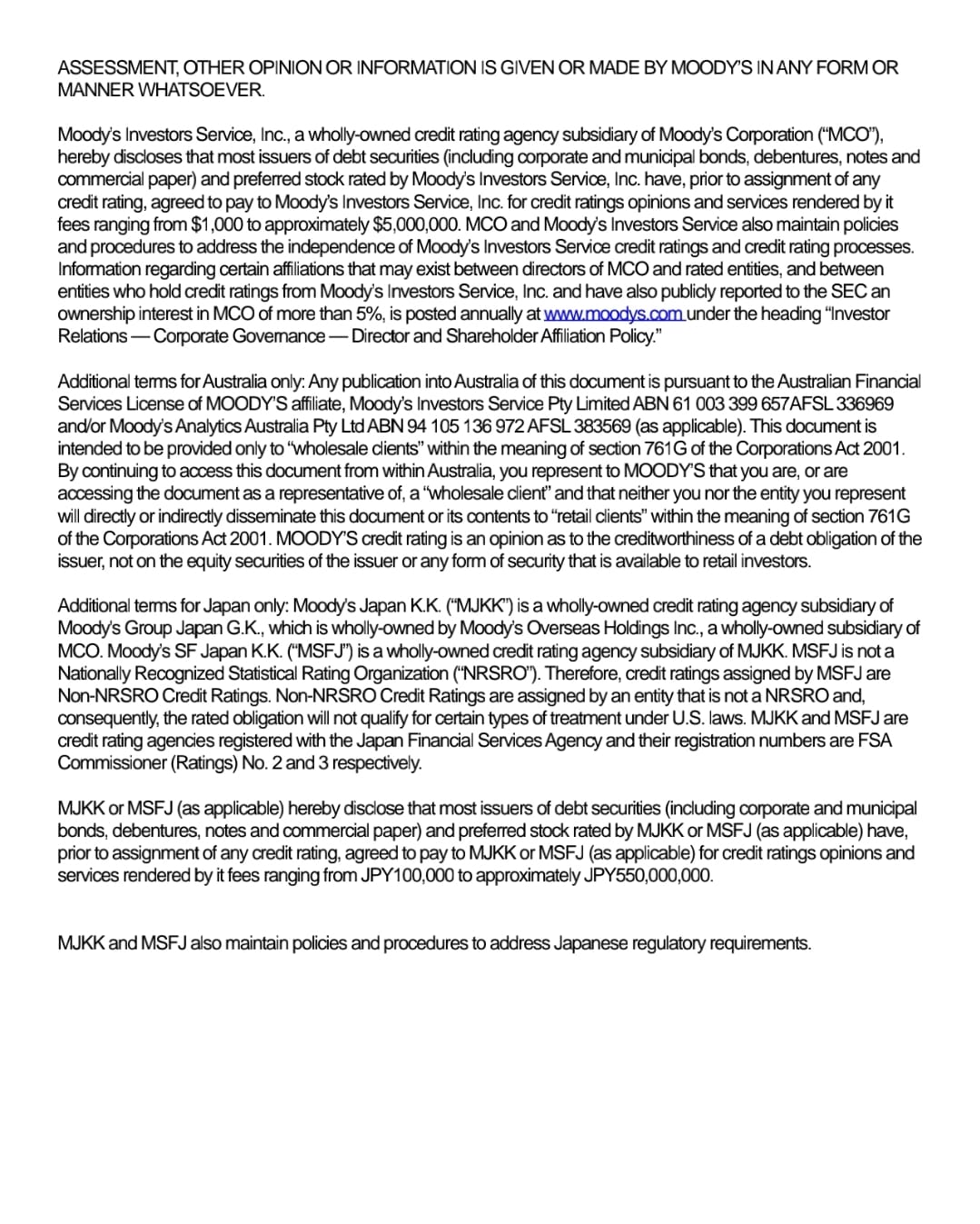
اقرأ أيضا..











